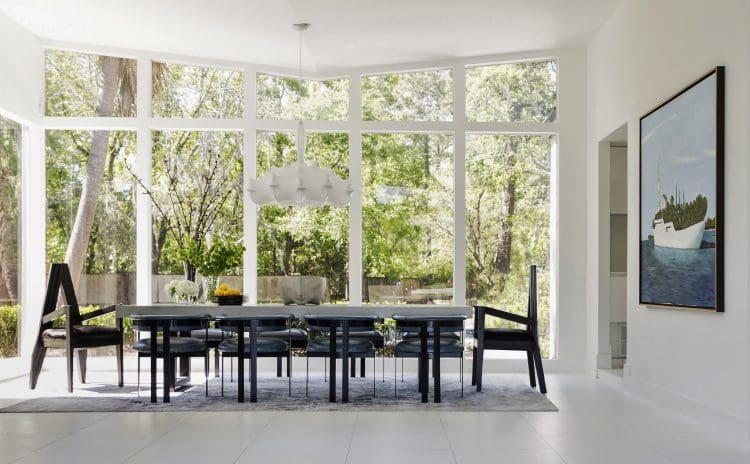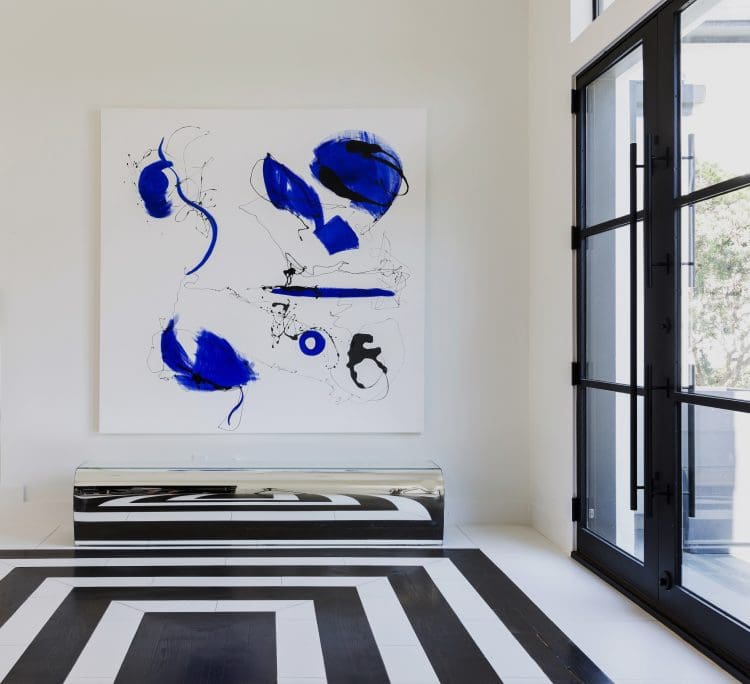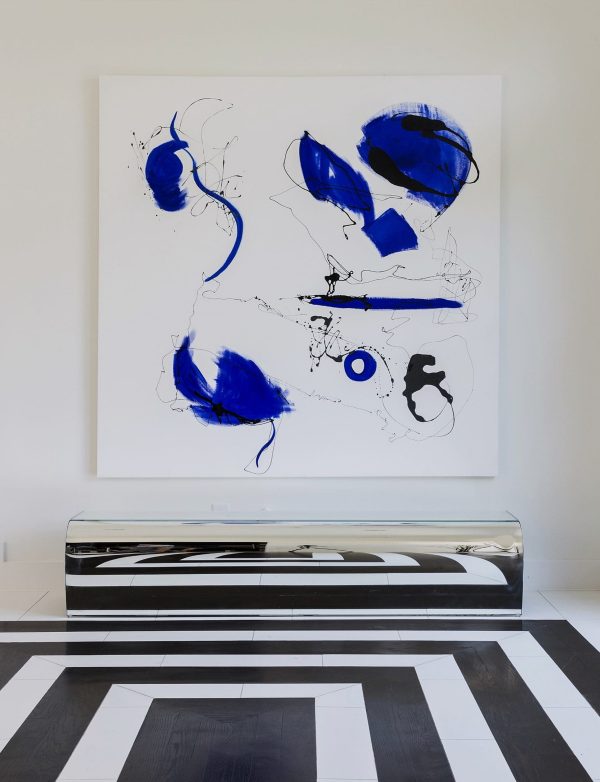Mid-Century Modern Interior Design
Mid-century modern interior design is a style that has captivated homeowners, designers, and enthusiasts for decades. Its timeless appeal, sleek lines, and iconic furniture pieces continue to inspire contemporary design trends. In this section, we will delve into the essence of mid-century modern interior design, exploring its definition, historical context, and key characteristics.
What is Mid-Century Modern?
Mid-century modern refers to a design movement that emerged roughly between the 1940s and 1960s, capturing the post-World War II era. It is characterized by a fusion of simplicity, functionality, and innovative use of materials. Mid-century modern design is often associated with the works of renowned designers such as Charles and Ray Eames, Eero Saarinen, and Arne Jacobsen.

Historical Context and Origins
To truly understand mid-century modern interior design, it is crucial to explore its historical context. This design style gained popularity during a time of immense social and technological change. The post-war period marked a shift in people’s aspirations and lifestyles, leading to a demand for fresh, forward-thinking designs that would resonate with the modern era.
Key Characteristics of Mid-Century Modern Interior Design
Mid-century modern design is characterized by several defining features:
- Clean Lines and Organic Forms: Mid-century modern embraces sleek, clean lines and organic shapes inspired by nature. Furniture and architectural elements often feature gentle curves and geometric simplicity.
- Functionality and Practicality: This design style prioritizes functionality and practicality. Furniture pieces are designed with a purpose, offering both aesthetics and usability. Storage solutions are often integrated seamlessly into the design.
- Use of Natural Materials: Mid-century modern design emphasizes the use of natural materials such as wood, leather, and metals like aluminum and steel. These materials bring warmth, texture, and a sense of craftsmanship to the space.
- Neutral Color Palette with Bold Accents: A typical mid-century modern color palette consists of neutral tones like white, beige, and gray. However, vibrant pops of color are introduced through accent pieces, upholstery, or artwork to add visual interest and personality.
- Integration of Indoor and Outdoor Spaces: Mid-century modern design embraces the concept of blurring the boundaries between indoor and outdoor living. Large windows, sliding doors, and open floor plans allow for a seamless connection with nature and abundant natural light.
By understanding these key characteristics, you will gain a solid foundation for incorporating mid-century modern elements into your interior design. In the following sections, we will explore specific aspects of this design style, from furniture and decor choices to color palettes and real-life examples, enabling you to create stunning mid-century modern spaces that exude sophistication and timelessness.
Mid-Century Modern Furniture and Decor
Mid-century modern interior design is renowned for its iconic furniture pieces and distinct decor choices. In this section, we will explore the key elements that define mid-century modern furniture and decor, including its timeless appeal, materials, textures, colors, and patterns.
Iconic Mid-Century Modern Furniture Pieces
- Eames Lounge Chair and Ottoman: Designed by Charles and Ray Eames, this chair is an icon of mid-century modern design. Its combination of molded plywood, leather upholstery, and ergonomic design exemplifies the style’s fusion of comfort and elegance.
- Noguchi Coffee Table: Isamu Noguchi’s sculptural coffee table, featuring a glass top resting on curved wooden legs, adds an artistic and organic touch to any mid-century modern space.
- Barcelona Chair: Designed by Ludwig Mies van der Rohe and Lilly Reich, this sleek and minimalist chair with its iconic X-shaped frame and tufted leather upholstery remains a symbol of modernist elegance.
- Eero Saarinen’s Tulip Chair: With its single pedestal base and molded fiberglass shell, the Tulip Chair showcases the mid-century modern emphasis on organic forms and innovative materials.
Materials and Textures
- Wood: Mid-century modern design extensively utilizes warm-toned woods like teak, walnut, and rosewood. These natural materials add warmth and sophistication to furniture pieces and create a harmonious connection with nature.
- Upholstery: Fabrics with textured weaves, such as tweed or boucle, were popular choices for mid-century modern upholstery. Additionally, leather upholstery, particularly in rich caramel or black tones, adds a touch of luxury.
- Metal Accents: Metal elements, such as chrome or brass, are often incorporated into mid-century modern furniture legs, hardware, or lighting fixtures, adding a sleek and reflective element to the design.
Colors and Patterns
- Neutral Tones: Mid-century modern design typically employs a neutral color palette for larger furniture pieces and walls. Shades of white, beige, and gray create a clean and timeless backdrop that allows other design elements to shine.
- Bold Accent Colors: To inject personality and vibrancy, mid-century modern design incorporates pops of bold colors. Vibrant shades like orange, yellow, and turquoise can be introduced through accent chairs, pillows, or artwork.
- Geometric Patterns: Geometric patterns, such as chevron, herringbone, or abstract shapes, are commonly found in mid-century modern decor. These patterns add visual interest and a sense of playfulness to the space.
By understanding the iconic furniture pieces, materials, textures, colors, and patterns associated with mid-century modern design, you can curate a cohesive and stylish interior that pays homage to this influential era. In the next section, we will explore how to create a mid-century modern color palette to further enhance your design scheme.

Creating a Mid-Century Modern Color Palette
A key aspect of mid-century modern interior design is the careful selection of colors to create a cohesive and visually pleasing space. In this section, we will delve into the process of creating a mid-century modern color palette, considering color psychology, popular color schemes, and incorporating accent colors.
Color Psychology in Mid-Century Modern Design
Understanding color psychology can greatly influence the atmosphere and mood of your mid-century modern space. Here are some color associations commonly found in mid-century modern design:
- Neutrals: Neutrals like white, beige, and gray serve as foundational colors, providing a clean and timeless backdrop. They create a sense of openness and allow other design elements to stand out.
- Earth Tones: Mid-century modern design often incorporates earthy hues like brown, tan, and olive green. These colors evoke a connection with nature and add warmth to the space.
- Vibrant Pops: Bold, vibrant colors like orange, yellow, and teal can be used as accent colors to add energy and visual interest. They create focal points and can be introduced through furniture, artwork, or accessories.
Popular Color Schemes
- Neutral with Vibrant Accents: This color scheme features a primarily neutral backdrop with vibrant accent colors used sparingly throughout the space. For example, a white or light gray wall can be complemented with pops of orange in throw pillows or artwork.
- Earth Tones with Neutrals: Combining earthy hues with neutrals creates a warm and inviting mid-century modern palette. Think of pairing a tan or olive green sofa with a white or beige wall.
- Monochromatic Elegance: A monochromatic color scheme, such as various shades of blue or green, can create a sophisticated and cohesive mid-century modern look. Use different tones of the same color for furniture, walls, and accessories.
Incorporating Accent Colors
Accent colors play a crucial role in mid-century modern design, adding personality and vibrancy to the space. Consider the following tips when incorporating accent colors:
- Select a Dominant Accent Color: Choose one bold color to be the focal point of your space. For example, a vibrant yellow chair or a turquoise rug can serve as a statement piece.
- Use Accent Colors in Small Doses: While accent colors add visual interest, it’s important not to overwhelm the space. Incorporate pops of color through accessories like throw pillows, rugs, or artwork.
- Consider Complementary Colors: To create a harmonious color palette, select accent colors that complement the existing colors in the room. Color wheels can be helpful in identifying complementary or analogous colors.
By understanding the psychology of color, exploring popular color schemes, and incorporating accent colors strategically, you can create a captivating mid-century modern color palette that enhances the overall design aesthetic. In the next section, we will delve into the essential elements that define mid-century modern interior design.
Essential Elements of Mid-Century Modern Interior Design
Mid-century modern interior design is characterized by specific elements that define its unique style and aesthetic. In this section, we will explore the essential elements that make up mid-century modern design, including open floor plans, functionality, integration of nature and natural light, and clean lines.
Open Floor Plans and Minimalism
Mid-century modern design embraces the concept of open floor plans, which foster a sense of spaciousness and flow. Walls are minimized to create seamless transitions between living areas, allowing natural light to permeate throughout the space. Key considerations include:
- Remove Unnecessary Walls: If feasible, consider opening up spaces by removing walls that separate common areas. This creates a sense of connectivity and openness.
- Streamlined Furniture: Opt for furniture pieces that are sleek and minimalistic. Avoid bulky or oversized furniture that may obstruct the visual flow of the space.
Emphasis on Functionality
Functionality is a fundamental principle of mid-century modern design. Furniture and decor serve a purpose beyond aesthetics. Consider the following:
- Purposeful Furniture: Select furniture pieces that are not only visually appealing but also practical and functional. Look for items with built-in storage solutions or multi-purpose designs.
- Thoughtful Layouts: Arrange furniture in a way that optimizes the flow of the space and allows for ease of movement. Consider the placement of key elements, such as seating areas and focal points.
Integration of Nature and Natural Light
Mid-century modern design aims to bring the outdoors in, creating a harmonious connection with nature. Natural light and the use of organic elements play a significant role. Consider the following:
- Abundant Natural Light: Maximize natural light by utilizing large windows or skylights. Avoid heavy window treatments that obstruct light or hinder views of the outdoors.
- Indoor Plants: Bring nature indoors by incorporating plants into your design. Select low-maintenance varieties that thrive in indoor environments, such as succulents or snake plants.
Geometric Shapes and Clean Lines
Clean lines and geometric shapes are prominent features of mid-century modern design. They create a sense of order and simplicity. Consider the following:
- Geometric Patterns: Integrate geometric patterns through wallpapers, rugs, or artwork. Look for designs with clean lines and symmetrical compositions.
- Furniture and Architectural Details: Opt for furniture with sleek lines and minimal ornamentation. Architectural details, such as exposed beams or angular fireplaces, can enhance the overall aesthetic.
By incorporating open floor plans, functionality, integration of nature and natural light, and clean lines into your mid-century modern interior design, you can create a space that is visually appealing, practical, and in harmony with its surroundings. In the next section, we will explore how to blend mid-century modern with contemporary design for a fresh and balanced approach.

Mixing Mid-Century Modern with Contemporary Design
Blending mid-century modern elements with contemporary design allows for a fresh and balanced approach to interior design. In this section, we will explore strategies for harmoniously combining these two styles, including balancing retro and modern elements, incorporating mid-century modern accents, and updating furniture and lighting.
Balancing Retro and Modern Elements
- Identify Common Ground: Look for shared design principles between mid-century modern and contemporary design, such as clean lines, minimalism, and a focus on functionality. Emphasize these common elements to create a cohesive design.
- Contrast with Contrasting: Use contrasting elements to highlight the distinct qualities of each style. For example, pair a sleek contemporary sofa with a retro mid-century modern coffee table to create an interesting juxtaposition.
Incorporating Mid-Century Modern Accents
- Statement Furniture: Select one or two mid-century modern furniture pieces as statement items to anchor the space. This could be an iconic chair, a unique sideboard, or a vintage lighting fixture.
- Accessorize with Mid-Century Modern Touches: Incorporate mid-century modern accents through smaller decor items such as artwork, ceramics, or throw pillows. Look for pieces that feature retro patterns or materials commonly associated with mid-century modern design.
Updating Furniture and Lighting
- Reupholster and Refinish: Give new life to mid-century modern furniture by reupholstering chairs or sofas in contemporary fabrics or refinishing wooden pieces with a fresh stain or paint color. This allows you to maintain the vintage charm while updating the overall look.
- Lighting with a Modern Twist: Replace outdated lighting fixtures with contemporary designs that complement the mid-century modern aesthetic. Choose fixtures with clean lines and modern materials, such as brushed metal or frosted glass.
Harmonizing Color Palette
- Neutrals and Subtle Tones: Opt for a neutral color palette as the base and introduce subtle tones inspired by mid-century modern design. Use accent colors strategically to create visual interest and tie the space together.
- Cohesive Color Flow: Ensure a harmonious color flow between mid-century modern and contemporary elements by selecting shades that complement or contrast in an intentional manner. Use color to create a visual connection and transition between the styles.
By skillfully blending mid-century modern elements with contemporary design, you can achieve a space that is both timeless and current. The combination of retro charm and modern sensibilities will create an inviting and sophisticated atmosphere. In the next section, we will explore real-life examples of mid-century modern interior design to inspire and guide your own projects.
Mid-century modern interior design is a captivating style that continues to inspire and influence contemporary aesthetics. By understanding the essential elements, such as open floor plans, functionality, integration of nature and natural light, and clean lines, you can create a space that exudes the timeless appeal of mid-century modern design. Additionally, by blending mid-century modern with contemporary elements, you can achieve a fresh and balanced approach that combines retro charm with modern sensibilities.
Creating a mid-century modern color palette allows you to set the tone and atmosphere of your space, whether through neutrals with vibrant accents or earthy tones with neutrals. Accent colors play a vital role in adding personality and visual interest to the design, and incorporating them strategically ensures a harmonious color flow.
Real-life examples of mid-century modern interior design showcase the beauty and versatility of this style. From retro retreats with iconic furniture pieces to contemporary fusions that seamlessly blend different design eras, these spaces serve as inspiration for incorporating mid-century modern elements in your own home.
As you embark on your mid-century modern design journey, remember to prioritize expertise, experience, authoritativeness, and trustworthiness in your decision-making process. Pay attention to the details, select high-quality furniture and decor, and seek a balance between functionality and aesthetics. With a thoughtful approach, you can create a space that not only reflects your personal style but also embodies the timeless allure of mid-century modern interior design.
It’s time to bring your mid-century modern vision to life. Embrace the elegance, simplicity, and charm of this iconic design style, and let it transform your living spaces into showcases of mid-century modern excellence.
